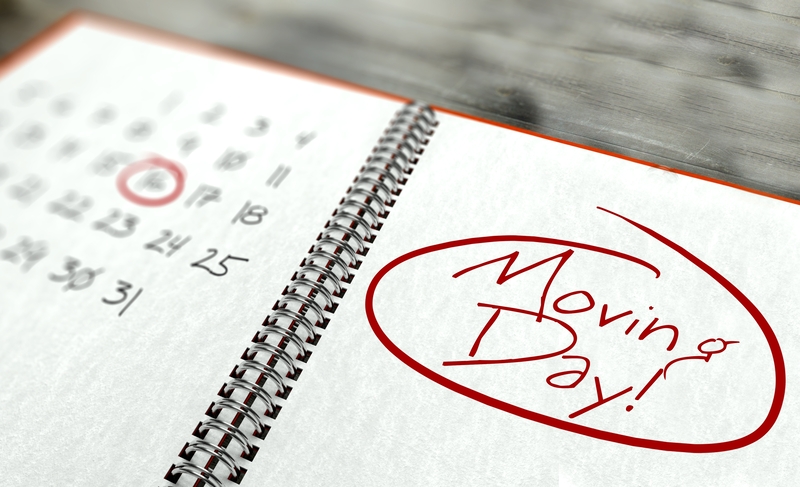How to Prioritize What to Pack First for a House Move
Moving to a new home can be both exhilarating and overwhelming. One of the most crucial steps in ensuring a smooth transition is properly packing your belongings. Knowing how to prioritize what to pack first for a house move can significantly reduce stress, save time, and minimize the risk of lost or broken items. This comprehensive guide will walk you through the best strategies and expert advice for efficiently packing your home, ensuring your move is as seamless as possible.
Why Packing Order Matters When Moving
Preparation plays a pivotal role in the success of any relocation process. Understanding what to pack first for a house move allows you to:
- Maintain organization and easily track packed items.
- Prevent unnecessary last-minute packing chaos.
- Reduce the risk of forgetting essentials.
- Protect valuable and fragile belongings by giving them special attention.
Prioritizing packing order also helps you continue your daily life with the least disruption before the big moving day.

How to Decide What Should Be Packed First for Moving
The key to prioritizing your packing is understanding what items you will not need until after your move. Here's a strategic approach to help you decide:
1. Begin with Non-Essential Items
Start by evaluating which household items are not crucial for your day-to-day life in the days and weeks before your move. These are perfect candidates to pack first. Think of:
- Seasonal decorations (holiday lights, winter gear in summer, etc.)
- Out-of-season clothing
- Books and magazines
- Collectibles and display items
- Rarely used appliances (ice cream maker, fondue set, etc.)
2. Pack Least-Used Rooms First
Rooms that do not play a major role in your daily routine can be boxed up early on. For example:
- Guest bedrooms and bathrooms
- Attics, basements, and storage closets
- Formal dining or sitting rooms
- Home libraries or dens
Prioritizing entire rooms this way keeps your main living spaces functional until just before the move.
3. Identify Fragile or Valuable Items
Fine china, artwork, jewelry, electronics, and personal documents require extra care. Pack these early so you can give them the proper attention without rushing. Be sure to:
- Use quality packing materials (bubble wrap, sturdy boxes, crumpled paper)
- Label boxes as "FRAGILE" for easy identification
- Keep valuable documents and jewelry with you during the move if possible
Step-by-Step Guide: What to Pack First When Moving House
Start Early and Stay Organized
Experienced movers recommend starting the packing process at least 4-6 weeks before your move. Here's a week-by-week breakdown:
- 4-6 Weeks Out: Non-essentials, decor, books, and off-season items
- 3-4 Weeks Out: Guest rooms, storage, other seldom-used spaces
- 2-3 Weeks Out: Clothes, cookware, and equipment you can do without for a time
- 1 Week Out: Essential everyday items should only now be boxed
- Day Before/Day Of: Last-minute essentials and perishables
This schedule ensures you maintain normal routines as long as possible, while staying ahead of the moving rush.
Detailed Packing Priority Checklist
Here's a comprehensive packing order list tailored for a highly-efficient move:
-
Storage Areas
- Garage, basement, attic, sheds
- Unused tools, camping gear, sporting goods
-
Decorations and Sentimental Items
- Wall art, picture frames, trophies
- Heirlooms and memorabilia
-
Off-Season Clothing and Sportswear
- Winter coats during summer, swimming gear in winter
-
Books, Games, and DVDs
- Except for a few favorites or children's bedtime stories
-
Rarely-Used Kitchenware
- Specialty pans, extra dish sets, small appliances
Room-by-Room Packing Tips
- Living Room: Start with decorative cushions, vases, books, and media.
- Bedroom: Spare linens, extra pillows, out-of-season clothes.
- Kitchen: Reserve only a basic cookware set; pack dishware, bakeware, and appliances not in daily use.
- Bathrooms: Pack all unopened toiletries and spare towels early; keep a small bag of essentials for everyday use.
- Home Office: Archive older paperwork, books, and decor; back up your digital files and safely pack electronics.
Packing Supplies: What to Prepare Before You Start
Having the right supplies makes the process efficient and protects your belongings. Here's what you need before prioritizing what to pack first for a move:
- Sturdy boxes in multiple sizes
- Bubble wrap and packing paper
- Heavy-duty tape and dispensers
- Permanent markers for labeling
- Plastic bins for valuables or important documents
- Color-coded stickers (for room assignments)
Tip: Don't overpack boxes! It's better to use extra boxes than risk injury or damage from heavy loads.
Decluttering: A Crucial Pre-Packing Task
Before you decide what to pack first for your house move, take the opportunity to declutter. This step will lighten your load, save time, and cut costs if you're hiring movers. Here's how:
- Sort belongings into "Keep", "Donate", and "Discard" piles
- Recycle or donate old clothes, knick-knacks, and non-essentials
- Consider selling valuables you no longer need
- Shred sensitive documents that are no longer necessary
Reducing the total number of items to pack makes prioritization far simpler and more efficient.
Maintaining an Organized Packing System
Label Boxes and Inventories
Whether you're packing over several weeks or days, clear labeling is your ally. Here's the best practice:
- Label boxes with both their contents and the room destination
- Number boxes for quick cross-checks
- Use a spreadsheet or notebook as a master inventory list
- Mark essential boxes (like bedding and toiletries) with a star or sticker for priority unloading
Color Coding and Packing Prioritization
Assign a specific color to each room using stickers, duct tape, or markers. This makes load-in at your new home fast and confusion-free.
Common Packing Mistakes and How to Avoid Them
- Packing Essentials Too Early: Don't pack daily necessities until just before you move to avoid frustration.
- Underestimating Time Needed: Start early; packing always takes longer than expected.
- Using Weak Boxes: Invest in sturdy materials to prevent breakage.
- Neglecting to Declutter: Moving unused or unwanted items increases the workload and moving costs unnecessarily.
Packing Your Moving Day Essentials
The very last items to pack--ideally the night before your move--are the belongings you'll need in the first 24-48 hours in your new home. Prepare an "essentials box" (also called a "first-night box") with the following:
- Personal toiletries and medications
- A few days' worth of clothing
- Bedding and pillows
- Important chargers and devices
- Basic kitchenware (plates, utensils, kettle, etc.)
- Cleaning supplies and toilet paper
- Pet food and supplies (if relevant)
- Copies of important moving documents
Keep this box with you in your car or mark it distinctly for quick access upon arrival at your new address.
Additional Tips for Smooth House Moving and Packing
- Use Small Boxes for Heavy Items: Books, tools, and canned goods stay manageable and prevent box breakage.
- Fill Empty Spaces: Use towels, clothing, or packing paper to cushion fragile items.
- Don't Overfill Large Boxes: They become unwieldy and prone to breaking.
- Photograph Complex Setups: Snap photos of cable arrangements, electronics, and decor to simplify setup in your new home.
- Enlist Help Early: Friends, family, or professional packers can lighten your load and keep you motivated.

Frequently Asked Questions
How do I know what to pack and when?
Begin with items and rooms you use least. Gradually work towards main living areas, reserving everyday essentials until the final days before your move.
Should I hire professional packers?
Professional packing services can be a worthwhile investment for saving time, ensuring fragile item protection, and minimizing stress. However, with organized prioritization, you can efficiently do it yourself.
How can I move with kids or pets?
Packing kids' toys and supplies last helps avoid disruptions to their environment. For pets, maintain familiar bedding and routines until moving day, and pack their essentials in a dedicated bag.
Conclusion: Mastering the Art of Packing For a House Move
Learning how to prioritize what to pack first for a house move is the secret to a hassle-free relocation. By systematically tackling non-essentials, lesser-used rooms, valuables, and finally, daily items, you'll maintain order and reduce moving stress. Don't forget to declutter before packing, label clearly, and create your essentials box.
With early planning and the practical strategies outlined above, your new beginning starts smooth and stress-free. Happy moving!



